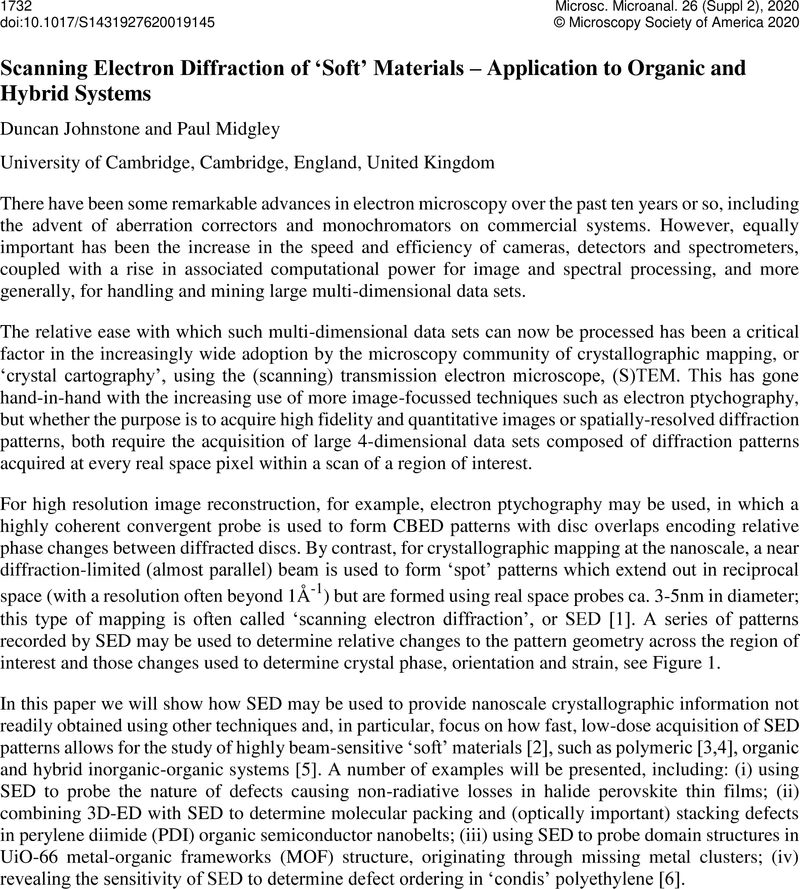Crossref Citations
This article has been cited by the following publications. This list is generated based on data provided by Crossref.
Castillo‐Seoane, Javier
Contreras‐Bernal, Lidia
Obrero‐Perez, Jose Manuel
García‐Casas, Xabier
Lorenzo‐Lázaro, Francisco
Aparicio, Francisco Javier
Lopez‐Santos, Carmen
Rojas, Teresa Cristina
Anta, Juan Antonio
Borrás, Ana
Barranco, Ángel
and
Sanchez‐Valencia, Juan Ramon
2022.
Highly Anisotropic Organometal Halide Perovskite Nanowalls Grown by Glancing‐Angle Deposition.
Advanced Materials,
Vol. 34,
Issue. 18,
Zuo, Jian-Min
Yuan, Renliang
Shao, Yu-Tsun
Hsiao, Haw-Wen
Pidaparthy, Saran
Hu, Yang
Yang, Qun
and
Zhang, Jiong
2022.
Data-driven electron microscopy: electron diffraction imaging of materials structural properties.
Microscopy,
Vol. 71,
Issue. Supplement_1,
p.
i116.




